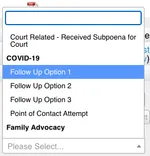
This Non-Profit is Using Smart Software to Track At-Risk Children During the COVID-19 Shutdown
We’re often impressed with the many ways that social services agencies use Collaborate to manage different aspects of their organizations. A recent and timely example is the Children’s Legacy Center (CLC), a Children’s Advocacy Center based in Redding, California.
“Keeping track of so many moving parts amid the pandemic was incredibly challenging. Collaborate not only made it possible for us, but they updated their system so efficiently and quickly that we had no time delay. We are beyond grateful for their efforts and can truly say it directly impacted the lives and safety of children in our community.”

Kimberly Johnson
CEO, Children’s Legacy Center
Amid the COVID-19 pandemic, local advocates have observed a drastic decrease in referrals into child welfare. Considering increased stress in many homes due to loss of income, combined with stay-at-home orders, the Children’s Legacy Center and their partners were understandably concerned.
In response, CLC created a special COVID-19 Multidisciplinary Team (MDT) in order to receive referrals from teachers and school administrators regarding at-risk children - and they’re tracking these efforts in Collaborate.
How COVID-19 Referrals Work in Collaborate
-
Clients are entered into Collaborate using a special COVID-19 Allegation.

-
Referral information is discussed in a rapid Case Review.
-
To track Clients in three separate risk tiers, staff record a Simple Service called Point of Contact Attempt, which includes three Follow Up Options.

-
As always, Administrators can run Reports on these COVID-19-related Cases to analyze aggregate data.

Kudos to Kimberly Johnson, CEO of Children’s Legacy Center, for coming up with the idea of using Collaborate to better serve children during the pandemic!
To help support CLC’s child advocacy mission, consider a donation.

